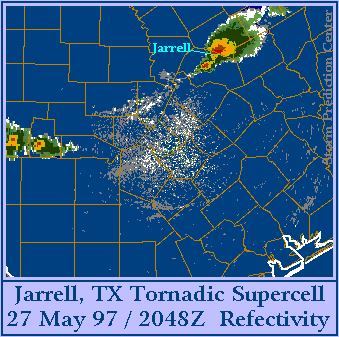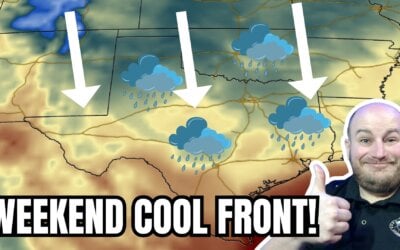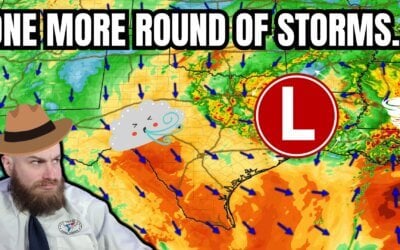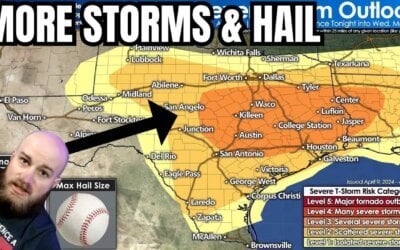Happy #WeatherWednesday everyone! Last time we talked about outflow boundaries, which relates to today’s topic. Today we will do a little history lesson and take a look at May 27th, 1997, just a few days over 20 years ago!
The photo above reveals what history we are talking about, and many may know this one…especially Texans! Twenty years ago featured deadly tornadoes including one of the most destructive tornadoes ever observed/recorded. Jarrell, TX was hit the hardest this day and experienced 27 deaths.
The “Jarrell tornado” (F5) is arguably the most violent tornado in US history, although not very well documented by meteorological observations because 5/27/97 wasn’t forecast to be a local tornado outbreak. The tornado moved slowly, which only made the damage worse. Homes and even their debris is said to have vanished from Jarrell as the tornado cleaned everything in its path and threw it miles away. Surprisingly, neighboring Interstate 35 didn’t take a hit. But if it had been bisected by this deadly tornado, the fatality rate would’ve been much higher due to gridlock traffic from police blockades and scared locals.
So what does an outflow boundary have to do with this day? It was the focus for lift and thunderstorm development in Central Texas. It was oriented from SW to NE just west of I-35 in Bell and Williamson counties. Upper level lift and wind shear was rather limited, so significant tornadoes weren’t exactly expected. What made the storm so angry was the massive amount of CAPE (instability allowing vertical development of storms). During its lifetime, the storm slowly moved SOUTHWEST! This actually is rare, especially for a tornadic supercell. While the overall surface wind pattern wasn’t favorable for supercells to thrive, this supercell was so strong (had high updraft velocity as a function of high CAPE) that it created its own favorable surface environment by increasing the speed and changing the direction of the inflow winds to maximize storm relative helicity.
Other Central Texas places that were hit by tornadoes but escaped direct deaths were Lake Travis and Cedar Park (F4 and F3 respectably). There were 20 tornadoes total, and 8 of them were F2 or higher. Please reference Fujita Scale if you desire a better idea of the former tornado ratings.
The National Weather Service in Fort Worth has compiled an extremely detailed meteorological summary for May 27, 1997 which can be found here.





0 Comments